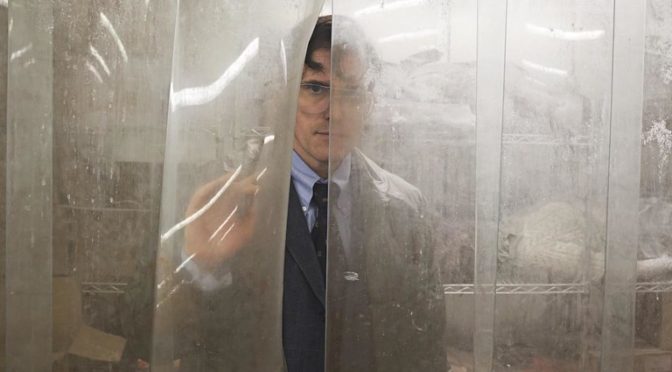Never one to shy away from controversy, Lars Von Trier delivers another uncomfortable cinematic viewing, with the premiere of THE HOUSE THAT JACK BUILT, shown during the 71st Cannes Film Festival. During the film, it was reported that over 100 people left because of some arguably gratuitous and disturbing deaths featured in the movie.
The film is a complex mix of horror, thriller and dark comedy; with some interesting signifying concepts about life, death and morality. It follows the life of the protagonist Jack, played by Matt Dillon, during his 12-year serial killing spree which focuses on five main stages of his rampage. The deaths mostly include women, who are portrayed as stupid in Jack’s tale, but Von Trier also takes a few shots (literally) at children. One of the main focuses is the depictions of murder as art, which is the house that he does build at the end of frozen, mangled corpses. It feels as if the deaths are made unnecessarily gory, and in some scenes, viewers did have to cover their eyes out of disgust.
While being riveting yet slightly nauseating, there is a structured chaos to the film. This is similar to Von Trier’s other films such as the so-called Depression Trilogy (ANTICHRIST, MELANCHOLIA, NYMPHOMANIAC) which are all viewed in parts. He toys with traditional concepts of a methodical psychopath, including Jack’s disturbed childhood and isolated traits which is balanced out by a humorously obsessive tendency. The cinematography floats around a Wes Anderson-esque wilderness and landscaping, which suits the setting of the 1970s and is in keeping thematically. However, there are bizarre episodes of flashbacks and historical footage of dictatorships and a slightly elongated ending.
The movie is not without faults, as the stomach-wrenching and perhaps unnecessary violence has been noted by fans online, especially considering the controversy surrounding Von Trier. His ban from the Cannes Film Festival in 2011 was widely publicised after making jokes about Nazis and Adolf Hitler when MELANCHOLIA was nominated for the Palm d’Or. In the wake of the #MeToo movement, many appeared angry that Von Trier was on the list as there were only three other featured female filmmakers, and there is a distinct lack of feminism within the film itself. The mere scene of a breast being sliced off was enough to make everyone wretch at the image.
In summary, it was not particularly groundbreaking, but typically controversial, disturbing and has the ability to upset viewers. For cult fans, it is another for the collection, for those on the fence it made for an interesting viewing, and for the rest – gut-wrenchingly futile.

